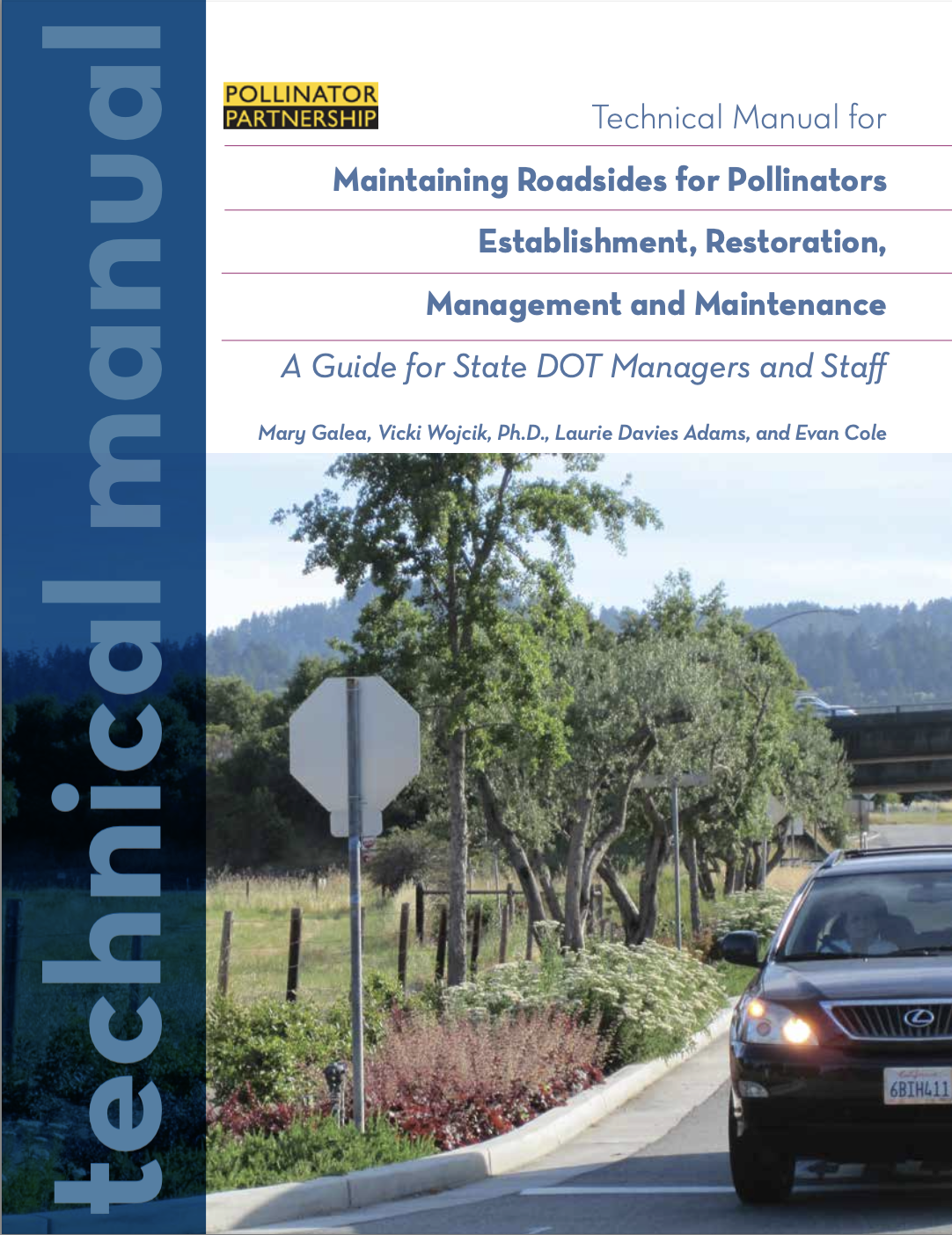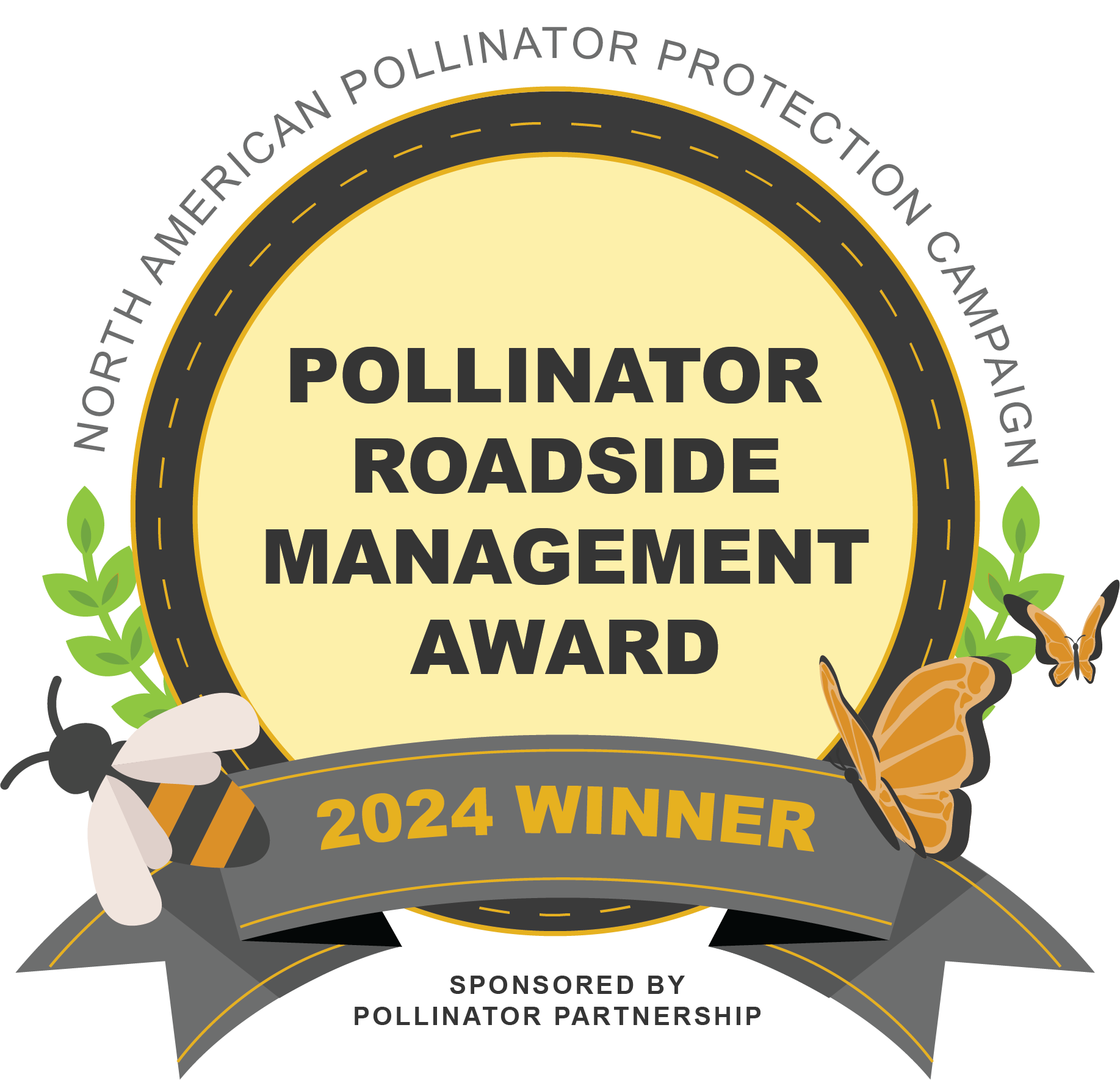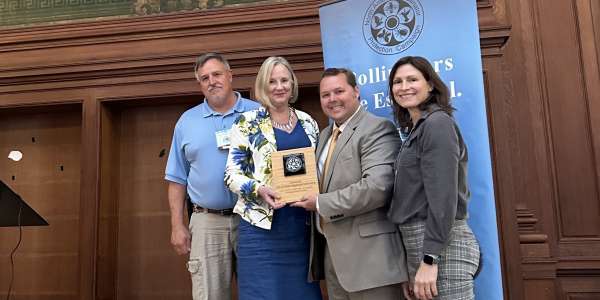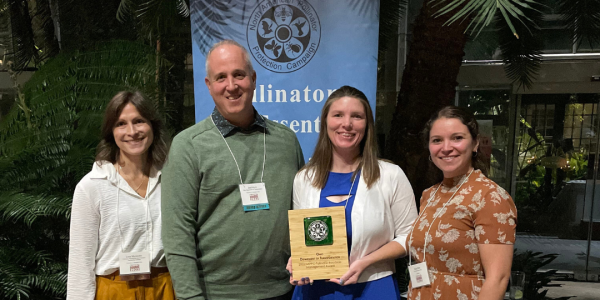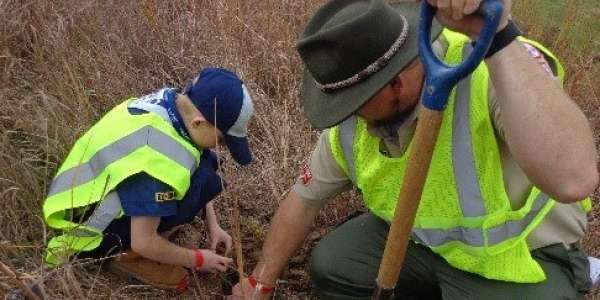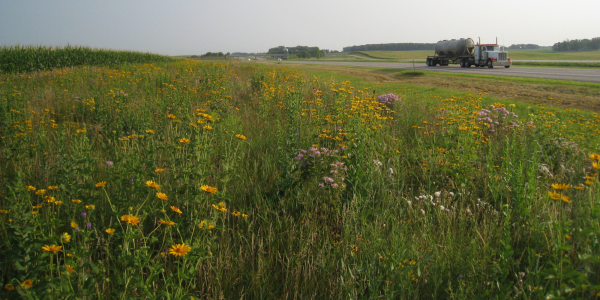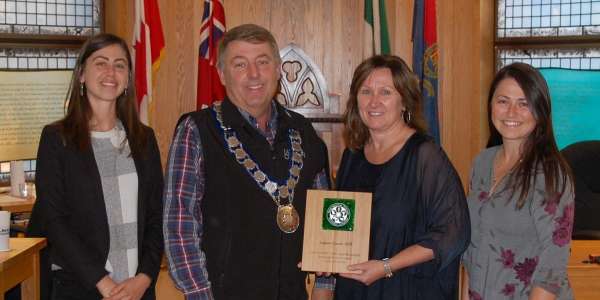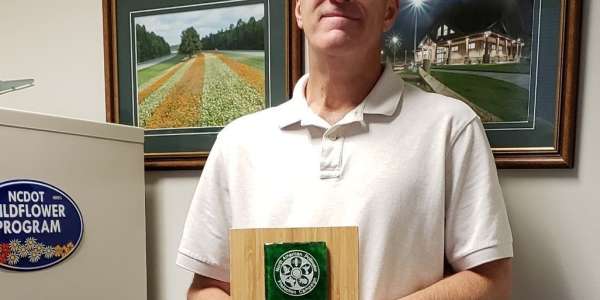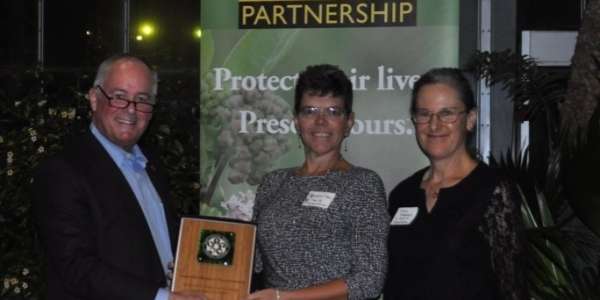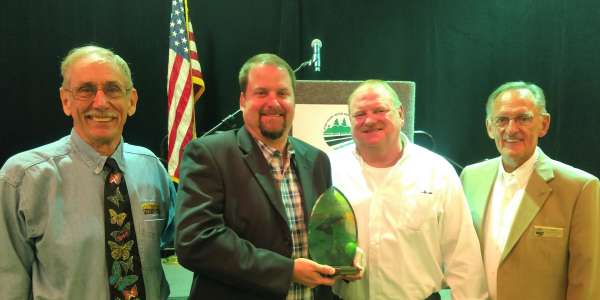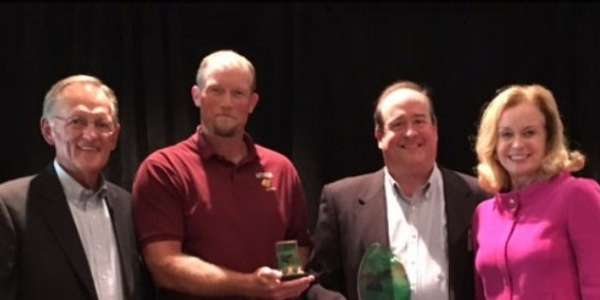Maintaining Roadsides for Pollinators
Technical Manual for Maintaining Roadsides for Pollinators: Establishment, Restoration, Management and Maintenance
A Guide for State DOT Managers and Staff
NAPPC Pollinator Roadside Management Award
Pollinator Roadways is an initiative of the North American Pollinator Protection Campaign (NAPPC) to recognize roadside management organizations and agencies who are leading the field in pollinator-friendly roadside practices. In 2025, NAPPC will be awarding its 10th annual Pollinator Roadside Management Award.
AWARD CRITERIA: Roadside Management Organization or Agency
Demonstrates an exemplary long-term commitment to provide pollinator habitat along roadsides.
Plants or seeds pollinator supporting vegetation.
Promotes vegetation management practices (mowing, pesticide use, etc.) within the group that incorporate the needs of pollinators.
Can describe the positive impacts of the group's pollinator initiative for animals and people.
Engages the public through education and outreach as well as signage.
Documented roadside miles impacted by the group's pollinator initiative and plans for the future.
WHAT YOU GET
- Award plaque presented at NAPPC 2025
- Media release template that you can customize
- An award badge that can be used on social media/websites/email signatures
- Registration at NAPPC 2025 for 1 representative
KEY DATES
Nomination Period: March 4th - June 15th, 2025
Deadline for Applications: July 1st, 2025
Award Announced: Summer/Fall 2025
Click here to view and download the nomination form.
*Be sure to type and save your answers in a separate document
Past NAPPC Pollinator Roadside Management Award Winners
2024 Award Winner
-
Texas Department of Transportation
Second Place: Virginia Department of Transportation
-
Georgia Department of Transportation
Second Place: Johnson County Integrated Roadside Vegetation Management
2023 Award Winner
2022 Award Winner
2021 Award Winner
2020 Award Winner
2019 Award Winners
2018 Award Winner
2017 Award Winners
2016 Award Winners
Highways BEE Act
Highways Bettering the Economy and Environment Pollinator Protection Act
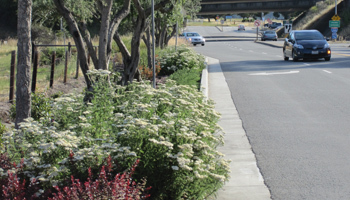
Highways BEE Act: H.R. 2738 was introduced by Reps Alcee Hastings (D-FL) and Jeff Denham (R-CA) on June 11 and is strongly supported by the Pollinator Partnership (P2). Hastings and Denham are co-chairs of the Congressional Pollinator Protection Caucus (CP2C).
VICTORY! POLLINATOR ROADSIDES PROVISION NOW LAW OF THE LAND! THANK YOU FOR YOUR SUPPORT.
Watch for additional action requests as we work with State Department of Transportation.
BACKGROUND
In Brief: To amend title 23, United States Code, to encourage and facilitate efforts by States and other transportation rights-of-way managers to adopt integrated vegetation management practices, including enhancing plantings of native forbs and grasses that provide habitats and forage for Monarch butterflies, native bees, and other native pollinators, and for other purposes. H.R. 2738 promotes conservation practices on 17 million acres of highway rights-of-way (ROWs) by encouraging willing State DOTs to reduce mowing and plant for pollinators, providing improved habitat for pollinators, ground nesting birds and other small wildlife. The goal is to get an amendment based on the Highways BEE Act in that important legislation.
RESOURCES
- Pollinator Roadsides Provision in FAST Act
- HR 2738 Bill Text
- P2 Summary-Highways BEE Act
- Sen. Gillibrand Amendment to DRIVE Act
- P2 Media Release [NEW]
- Group Petition, Organization & Individual Signatories to Date
CLICK HERE to view COMMENTS made about the Highways BEE Act by nearly 1,000 supporters. What is your favorite?
SUPPORT FOR HIGHWAYS BEE ACT
The undersigned support H.R. 2738, the Highways Bettering the Economy and Environment Pollinator Protection Act (Highways BEE Act).
Pollinators, such as honey bees and native pollinators, birds, bats, and butterflies, are essential to healthy ecosystems and are vital partners in American agriculture. Honey bees, monarch butterflies and other native pollinators are suffering drastic population losses, due in part to loss of habitat.
Highway right-of-ways (ROWs) managed by State Departments of Transportation (State DOTs) represent about 17 million acres of opportunity where significant economic and conservation/environmental benefits can be achieved through integrated vegetation management (IVM) practices, that can—
- Significantly reduce mowing and maintenance costs for State DOTs, and
- Help create habitat, forage and migratory corridors that will contribute to the health of honey bees, monarch butterflies and other native pollinators, as well as ground nesting birds and other small wildlife.
Neighboring agricultural lands and wildlife ecosystems will benefit through improved pollination services.
The Highways BEE Act directs the Secretary of Transportation to use existing authorities, programs and funding to encourage and facilitate IVM and pollinator habitat efforts by willing State DOTs and other transportation ROWs managers, building on innovative IVM efforts in a growing number of State DOTs.
